Developing country

A developing country, also called a less developed country or underdeveloped country, is a nation or sovereign state with a less developed industrial base and a low Human Development Index (HDI) relative to other countries.[1] However, since the late 1990s developing countries tended to demonstrate higher growth rates than the developed ones.[2] There are no universally agreed-upon criteria for what makes a country developing versus developed and which countries fit these two categories,[3] although there are general reference points such as a nation's GDP per capita compared to other nations. Also, the general term less-developed country should not be confused with the specific least developed country.
There is criticism of the use of the term developing country. The term implies inferiority of a developing country or undeveloped country compared to a developed country, which many countries dislike. It assumes a desire to develop along the traditional Western model of economic development which a few countries, such as Cuba and Bhutan, choose not to follow.[4] An alternative measurement that has been suggested is that of gross national happiness. Countries on the boundary between developed and developing are often categorized under the term newly industrialized countries.[5][6][7][8]
According to authors such as Walt Whitman Rostow, developing countries are in transition from traditional lifestyles towards the modern lifestyle which began in the Industrial Revolution in the 18th and 19th centuries.
In the 2016 edition of its World Development Indicators, the World Bank made a decision to no longer distinguish between “developed” and “developing” countries in the presentation of its data. Nobody has ever agreed on a definition for these terms in the first place.[9]
Definition

Various terms are used for whatever is not a developed country. Terms used include less developed country or less economically developed country, and for the more extreme, least developed country or least economically developed country.
Criteria for what is not a developed country can be obtained by inverting the factors that define a developed country:
- people have lower life expectancy
- people have less education and literacy rate
- people have less money (income)
- women have higher fertility rate and pregnancy
Kofi Annan, former Secretary General of the United Nations, defined a developed country as "one that allows all its citizens to enjoy a free and healthy life in a safe environment."[10] But according to the United Nations Statistics Division,
- There is no established convention for the designation of "developed" and "developing" countries or areas in the United Nations system.[3]
- The designations "developed" and "developing" are intended for statistical convenience and do not necessarily express a judgment about the stage reached by a particular country or area in the development process.[11]
The UN also notes,
- In common practice, Japan in Asia, Canada and the United States in northern America, Australia and New Zealand in Oceania and western Europe are considered "developed" regions or areas. In international trade statistics, the Southern African Customs Union is also treated as a developed region and Israel as a developed country; countries emerging from the former Yugoslavia are treated as developing countries; and countries of Central Europe and of the Commonwealth of Independent States (code 172) in Europe are not included under either developed or developing regions.[3]
On the other hand, according to the classification from International Monetary Fund (IMF) before April 2004, all countries of Central and Eastern Europe (including Central European countries that still belongs to the "Eastern Europe Group" in the UN institutions) as well as the former Soviet Union (USSR) countries in Central Asia (Kazakhstan, Uzbekistan, Kyrgyzstan, Tajikistan and Turkmenistan) and Mongolia, were not included under either developed or developing regions, but rather were referred to as "countries in transition"; however they are now widely regarded (in the international reports) as "developing countries".
The IMF uses a flexible classification system that considers "(1) per capita income level, (2) export diversification—so oil exporters that have high per capita GDP would not make the advanced classification because around 70% of its exports are oil, and (3) degree of integration into the global financial system."[12]
The World Bank classifies countries into four income groups. These are set each year on July 1. Economies were divided according to 2016 GNI per capita using the following ranges of income:[13]
- Low income countries had GNI per capita of US$1,025 or less.
- Lower middle income countries had GNI per capita between US$1,026 and US$4,035.
- Upper middle income countries had GNI per capita between US$4,036 and US$12,475.
- High income countries had GNI per capita above US$12,476.
Since 2016 the World Bank no longer divide countries into two groups according to the out-dated concept of developed and developing [13]
Along with the current level of development, countries may be classified by how much this has changed over some amount of time.[14] This may be by absolute numbers or country ranking.
- countries that were more less-developed, and are less less-developed (also developing country)
- countries that were less-developed, and are about the same (developing country)
- countries that were less less-developed, and are more less-developed (developing country)
Measure and concept of development


The development of a country is measured with statistical indexes such as income per capita (per person) (gross domestic product), life expectancy, the rate of literacy. The UN has developed the Human Development Index (HDI), a compound indicator of the above statistics, to gauge the level of human development for countries where data is available. The UN sets Millennium Development Goals (MDGs) from a blueprint developed by all of the world's countries and leading development institutions, in order to evaluate growth.[15]
Developing countries are, in general, countries that have not achieved a significant degree of industrialization relative to their populations, and have, in most cases, a medium to low standard of living. There is a strong association between low income and high population growth.
The terms utilized when discussing developing countries refer to the intent and to the constructs of those who utilize these terms. Other terms sometimes used are less developed countries (LDCs), least economically developed countries (LEDCs), "underdeveloped nations" or Third World nations, and "non-industrialized nations". Conversely, developed countries, most economically developed countries (MEDCs), First World nations and "industrialized nations" are the opposite end of the spectrum.
To moderate the euphemistic aspect of the word developing, international organizations have started to use the term less economically developed country (LEDCs) for the poorest nations—which can, in no sense, be regarded as developing. That is, LEDCs are the poorest subset of LDCs. This may moderate against a belief that the standard of living across the entire developing world is the same.
The concept of the developing nation is found, under one term or another, in numerous theoretical systems having diverse orientations — for example, theories of decolonization, liberation theology, Marxism, anti-imperialism, and political economy.
Another important indicator is the sectoral changes that have occurred since the stage of development of the country. On an average, countries with a 50% contribution from the Secondary sector of Manufacturing have grown substantially. Similarly countries with a tertiary Sector stronghold also see greater rate of Economic Development.
Some researchers in development economics, such as Theodore Schultz who won a Nobel Prize in 1979, have found that literate farmers in developing countries are more productive than illiterate farmers. They therefore recommend investing in human capital (education, health, etc.) as an effective tool for economic development. Others, such as Mohammed Tamim, believe that economic development is measurable in educational level from primary school to the university. They noticed that wherever the educational level is raised, the level of development is also raised. They conclude that the percentage of the schooled population is proportional to the economic growth rate and inversely proportional in the demographic growth rate. The Take-Off of Walt Whitman Rostow can start in a country if its population is completely schooled. It is therefore necessary for the organization of a worldwide education program, itself conditioned by another worldwide program of birth control and the establishment of a worldwide organization for the implementation of this development strategy.[16]
Trends
Priority health risks in developing countries
- Unsafe water
- Indoor smoke
- Topical and infectious diseases
- Air pollution
- Climate change
- Road traffic accidents
- Unintentional poisoning[17]
Future trends and emerging issues
- Population growth in the urban areas of poor countries.
- Rapid environmental and health hazards.
- Traffic fatalities and air pollution.
- Non communicable diseases.
- Physical inactivity leading to death.
- Increased and intensified industrial and agricultural production and emission of toxic chemicals directly into the soil, air, and water.
- Unsustainable use of energy resources.
- Climate change-related health impacts leading to the loss of biodiversity and affecting the ecosystem.
- High dependency on natural resources for livelihood, leading to unsustainable exploitation or depletion of those resources
- Least access to clean water.[18]
Factors stimulating growth
- Human Capital [19][20]
- Trade Policy: Countries with more restrictive policies have not grown as fast as countries with open and less distorted trade policies.[20][21]
- Investment: Investment has a positive effect on growth.[20]
- Knowledge Gap [20]
Factors hindering growth
- Illness/Disease (malaria, tuberculosis, AIDS, etc.): Illness imposes high and regressive cost burdens on families in developing countries.[22]
- Malnutrition/Underdevelopment of the body and brain: More than 200 million children under five years of age in developing countries do not reach their developmental potential.[23]
- Knowledge gap [20]
- Political instability [20]
- Political corruption[24]
Prevention of negative factors
- Mobile Health Units: Costing $1.26 per patient, mobile health units help control malaria and sanitation of water. The estimated cost per infant and child death averted was $200–$250.[25]
- Education [26]
Typology of countries

There are several terms used to classify countries into rough levels of development. Classification of any given country differs across sources, and sometimes these classifications or the specific terminology used is considered disparaging. Use of the term "market" instead of "country" usually indicates specific focus on the characteristics of the countries' capital markets as opposed to the overall economy.
- Developed countries and developed markets
- Developing countries include, in decreasing order of economic growth or size of the capital market:
Developing countries can also be categorized by geography:
Other classifications include:
- Heavily indebted poor countries, a definition by a program of the IMF and World Bank
- Transition economy, moving from a centrally planned to market-driven economy
Criticism of the term "developing country"
There is some criticism of the use of the term "developing country". The term implies inferiority of a "developing country" or "undeveloped country" compared to a "developed country", which many countries dislike. It is criticized for being too positive and too negative.
It assumes a desire to "develop" along the traditional Western model of economic development, which a few countries, such as Cuba and Bhutan, choose not to follow.[4]
The concept of "development" rests on the assumption that Modernization theory holds. Modernization theory, as the dominant development theory of the late 19th and 20th centuries, has largely contributed to the definition of "development". In short, it argues that there is only one way to achieve "modernity" and "development" - that of "Western" nation-states. Largely challenged today, modernization theory still holds an important role in defining "development".
The term "developing" implies mobility and does not acknowledge that development may be in decline or static in some countries, particularly in southern African states worst affected by HIV/AIDS. In such cases, the term "developing country" may be considered a euphemism. The term implies homogeneity between such countries, which vary widely. The term also implies homogeneity within such countries when wealth (and health) of the most and least affluent groups varies widely. Similarly, the term "developed country" incorrectly implies a lack of continuing economic development/growth in more-developed countries.
In general, development entails a modern infrastructure (both physical and institutional), and a move away from low value added sectors such as agriculture and natural resource extraction. Developed countries, in comparison, usually have economic systems based on continuous, self-sustaining economic growth in the tertiary sector of the economy and quaternary sector of the economy and high material standards of living. However, there are notable exceptions, as some countries considered developed have a significant component of primary industries in their national economies, e.g., Norway, Canada, Australia. The USA and Western Europe have a very important agricultural sector, and are major players in international agricultural markets. Also, natural resource extraction can be a very profitable industry (high value added), e.g., oil extraction.
An alternative measurement that has been suggested is that of gross national happiness, measuring the actual satisfaction of people as opposed to how fiscally wealthy a country is.
During the late 20th century, and with the advance of World-systems theory, the notions of "developed country" and "developing country" have started to slowly be replaced by the less-controversial, trade-based, notions of "core country", "semi-periphery country" and "periphery country". The terms of "developing countries" and "developed countries", although obsolete, still continue to be dominant, as part of the official narrative.
List of developing economies
The following are considered developing economies according to the International Monetary Fund's World Economic Outlook Report, April 2015.[28][29]
 Afghanistan
Afghanistan Albania
Albania Algeria
Algeria Angola
Angola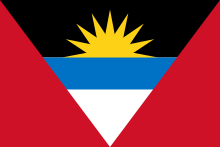 Antigua and Barbuda
Antigua and Barbuda Argentina
Argentina Armenia
Armenia Azerbaijan
Azerbaijan Bahamas
Bahamas Bahrain
Bahrain Bangladesh
Bangladesh Barbados
Barbados Belarus
Belarus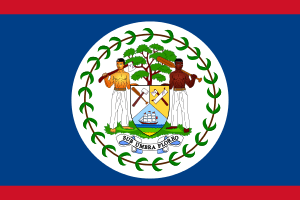 Belize
Belize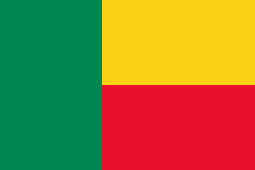 Benin
Benin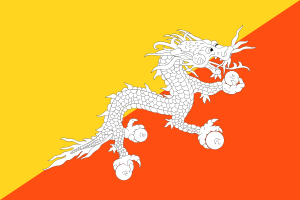 Bhutan
Bhutan Bolivia
Bolivia Bosnia and Herzegovina
Bosnia and Herzegovina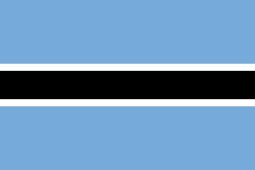 Botswana
Botswana Brazil
Brazil Brunei
Brunei Bulgaria
Bulgaria Burkina Faso
Burkina Faso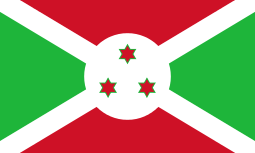 Burundi
Burundi Cambodia
Cambodia Cameroon
Cameroon Cape Verde
Cape Verde Central African Republic
Central African Republic Chad
Chad Chile
Chile China
China Colombia
Colombia Comoros
Comoros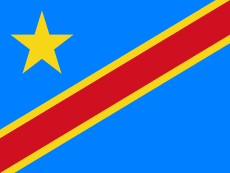 Democratic Republic of the Congo
Democratic Republic of the Congo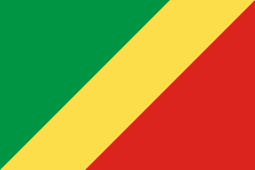 Republic of the Congo
Republic of the Congo Costa Rica
Costa Rica Croatia
Croatia Djibouti
Djibouti Dominica
Dominica Dominican Republic
Dominican Republic Ecuador
Ecuador Egypt
Egypt El Salvador
El Salvador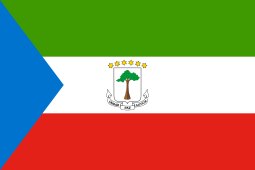 Equatorial Guinea
Equatorial Guinea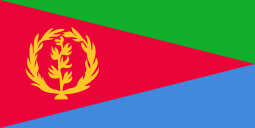 Eritrea
Eritrea Ethiopia
Ethiopia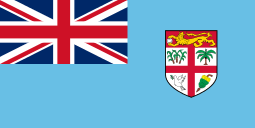 Fiji
Fiji Gabon
Gabon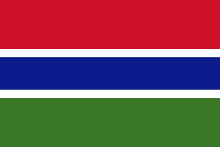 The Gambia
The Gambia Georgia
Georgia Ghana
Ghana Grenada
Grenada Guatemala
Guatemala Guinea
Guinea Guinea-Bissau
Guinea-Bissau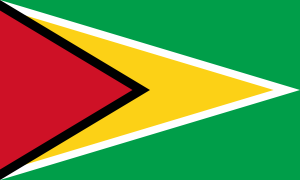 Guyana
Guyana Haiti
Haiti Honduras
Honduras Hungary
Hungary India
India Indonesia
Indonesia Iran
Iran Iraq
Iraq Ivory Coast
Ivory Coast Jamaica
Jamaica Jordan
Jordan Kazakhstan
Kazakhstan Kenya
Kenya Kiribati
Kiribati Kosovo
Kosovo Kuwait
Kuwait Kyrgyzstan
Kyrgyzstan Laos
Laos Lebanon
Lebanon Lesotho
Lesotho Liberia
Liberia Libya
Libya Macedonia
Macedonia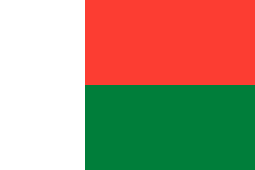 Madagascar
Madagascar Malawi
Malawi Malaysia
Malaysia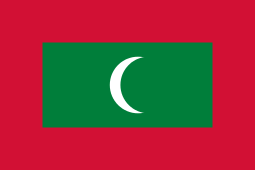 Maldives
Maldives Mali
Mali Marshall Islands
Marshall Islands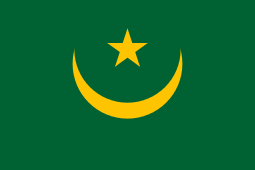 Mauritania
Mauritania Mauritius
Mauritius Mexico
Mexico Federated States of Micronesia
Federated States of Micronesia Moldova
Moldova Mongolia
Mongolia Montenegro
Montenegro Morocco
Morocco Mozambique
Mozambique Myanmar
Myanmar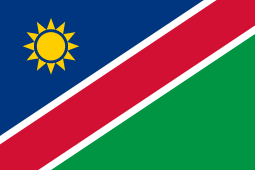 Namibia
Namibia Nepal
Nepal Nicaragua
Nicaragua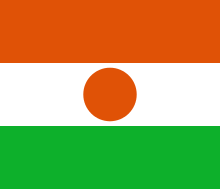 Niger
Niger Nigeria
Nigeria Oman
Oman Pakistan
Pakistan Palau
Palau Panama
Panama Papua New Guinea
Papua New Guinea Paraguay
Paraguay Peru
Peru Philippines
Philippines Poland
Poland Qatar
Qatar Romania
Romania Russia
Russia Rwanda
Rwanda Saint Kitts and Nevis
Saint Kitts and Nevis Saint Lucia
Saint Lucia Saint Vincent and the Grenadines
Saint Vincent and the Grenadines Samoa
Samoa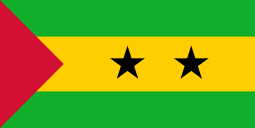 São Tomé and Príncipe
São Tomé and Príncipe Saudi Arabia
Saudi Arabia Senegal
Senegal Serbia
Serbia Seychelles
Seychelles Sierra Leone
Sierra Leone Solomon Islands
Solomon Islands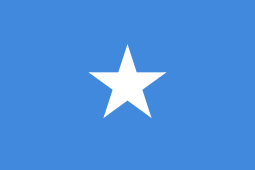 Somalia
Somalia South Africa
South Africa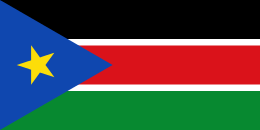 South Sudan
South Sudan Sri Lanka
Sri Lanka Sudan
Sudan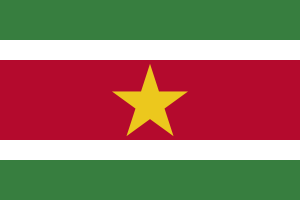 Suriname
Suriname Swaziland
Swaziland Syria
Syria Tajikistan
Tajikistan Tanzania
Tanzania Thailand
Thailand Timor-Leste
Timor-Leste Togo
Togo Tonga
Tonga Trinidad and Tobago
Trinidad and Tobago Tunisia
Tunisia Turkey
Turkey Turkmenistan
Turkmenistan Tuvalu
Tuvalu Uganda
Uganda Ukraine
Ukraine United Arab Emirates
United Arab Emirates Uruguay
Uruguay Uzbekistan
Uzbekistan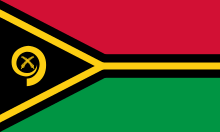 Vanuatu
Vanuatu Venezuela
Venezuela Vietnam
Vietnam Yemen
Yemen Zambia
Zambia Zimbabwe
Zimbabwe
Developing countries not listed by IMF
List of graduated developing economies
The following, including the Four Asian Tigers and new Eurozone countries, were considered developing countries until recently, and are now listed as advanced economies by the IMF. Time in brackets is the time to be listed as advanced economies.
 Hong Kong (since 1997)[30]
Hong Kong (since 1997)[30] Israel (since 1997)[30]
Israel (since 1997)[30] Singapore (since 1997)[30]
Singapore (since 1997)[30] South Korea (since 1997)[30]
South Korea (since 1997)[30] Taiwan (since 1997)[30]
Taiwan (since 1997)[30] Cyprus (since 2001)[31]
Cyprus (since 2001)[31] Slovenia (since 2007)[32]
Slovenia (since 2007)[32] Malta (since 2008)[33]
Malta (since 2008)[33] Czech Republic (since 2009,[34] since 2006 by World Bank)[35]
Czech Republic (since 2009,[34] since 2006 by World Bank)[35] Slovakia (since 2009)[34]
Slovakia (since 2009)[34] Estonia (since 2011)[36]
Estonia (since 2011)[36] Latvia (since 2014)[37]
Latvia (since 2014)[37] Lithuania (since 2015)[38]
Lithuania (since 2015)[38]
Three economies lack data before being listed as advanced economies. Because of the lack of data, it is difficult to judge whether they are advanced economies or developing economies before being listed as advanced economies.
 San Marino (since 2012)[39]
San Marino (since 2012)[39] Puerto Rico (since 2016)[40]
Puerto Rico (since 2016)[40] Macau (since 2016)[40]
Macau (since 2016)[40]
See also
- Dependency Theory
- First World privilege
- First World problem
- Fourth World
- Globalization
- Global South
- Multinational corporation
- North-South divide
References
- ↑ O'Sullivan, Arthur; Sheffrin, Steven M. (2003). Economics: Principles in Action. Upper Saddle River, New Jersey 07458: Pearson Prentice Hall. p. 471. ISBN 0-13-063085-3.
- ↑ Korotayev A., Zinkina J. On the structure of the present-day convergence. Campus-Wide Information Systems. Vol. 31 No. 2/3, 2014, pp. 139-152
- 1 2 3 "Composition of macro geographical (continental) region".
- 1 2 Karma Ura. "The Bhutanese development story" (PDF). Retrieved 17 September 2012.
- ↑ Paweł Bożyk (2006). "Newly Industrialized Countries". Globalization and the Transformation of Foreign Economic Policy. Ashgate Publishing, Ltd. ISBN 0-7546-4638-6.
- ↑ Mauro F. Guillén (2003). "Multinationals, Ideology, and Organized Labor". The Limits of Convergence. Princeton University Press. ISBN 0-691-11633-4.
- ↑ Waugh, David (2000). "Manufacturing industries (chapter 19), World development (chapter 22)". Geography, An Integrated Approach (3rd ed.). Nelson Thornes Ltd. pp. 563, 576–579, 633, and 640. ISBN 0-17-444706-X.
- ↑ Mankiw, N. Gregory (2007). Principles of Economics (4th ed.). ISBN 0-324-22472-9.
- ↑ Fernholz, Tim. "The World Bank is eliminating the term "developing country" from its data vocabulary". Retrieved 2016-09-06.
- ↑ G_05_00
- ↑ "United Nations Statistics Division- Standard Country and Area Codes Classifications (M49)". Unstats.un.org. Retrieved 2014-01-15.
- ↑ "Q. How does the WEO categorize advanced versus emerging and developing economies?". International Monetary Fund. Retrieved July 20, 2009.
- 1 2 http://blogs.worldbank.org/opendata/2016-edition-world-development-indicators-out-three-features-you-won-t-want-miss. Retrieved October 22, 2016. Missing or empty
|title=(help) - ↑ "Least Developed Countries Report 2012 - Unctad" (PDF).
- ↑ United Nations Millennium Development Goals
- ↑ Mohammed Tamim, Le Spectre du tiers-monde, L'Harmattan, 2002
- ↑ "Environment and health in developing countries". Priority environment and health risks. World Health Organization. 8 September 2016.
- ↑ "Difference between Developed and Developing Countries - ResearchPedia.Info". 2015-08-16. Retrieved 2016-09-06.
- ↑ Schultz, Theodore W. 1961. "Investment in human capital." American Economic Review 51, no. 1 (March): 1-17.
- 1 2 3 4 5 6 Edwards, S. "Trade Orientation, Distortions and Growth In Developing Countries." (n.d.): n. pag. 1-37
- ↑ Harrison, Ann. "Openness and Growth: A Time-series, Cross-country Analysis for Developing Countries." Journal of Development Economics 48.2 (1996): 419-47. Web.
- ↑ Russel S. The economic burden of illness for households in developing countries: a review of studies focusing on malaria, tuberculosis, and human immunodeficiency virus/acquired immunodeficiency syndrome. Am J Trop Med Hyg 2004
- ↑ Grantham-McGregor, Sally et al., the International Child Development Steering Group. “Developmental Potential in the First 5 Years for Children in Developing Countries.” Lancet 369.9555 (2007): 60–70. PMC. Web. 28 Nov. 2014.
- ↑ Political factors that affect development | Make Wealth History
- ↑ Walsh, J., and K. Warren. "Control of Infectious Disease in Developing Countries." New England Journal of Medicine 304.1 (1981): n. pag. 967-974
- ↑ Verspoor, Adriaan. "Pathways to Change: Improving the Quality of Education in Developing Countries. World Bank Discussion Papers 53." (n.d.):
- ↑ April 2008 World Economic Outlook
- ↑ "World Economic Outlook, April 2015, pp.150-153" (PDF). Retrieved 2015-06-26.
- ↑ "World Economic Outlook, Database—WEO Groups and Aggregates Information, April 2015". Retrieved 2015-06-26.
- 1 2 3 4 5 "IMF Advanced Economies List. World Economic Outlook, May 1998, p. 134" (PDF). Retrieved 2014-01-15.
- ↑ "World Economic Outlook, April 2001, p.157" (PDF). Retrieved 2014-01-15.
- ↑ "World Economic Outlook, April 2007, p.204" (PDF). Retrieved 2014-01-15.
- ↑ "World Economic Outlook, April 2008, p.236" (PDF). Retrieved 2014-01-15.
- 1 2 "World Economic Outlook, April 2009, p.184" (PDF). Retrieved 2014-01-15.
- ↑ Velinger, Jan (28 February 2006). "World Bank Marks Czech Republic's Graduation to 'Developed' Status". Radio Prague. Retrieved 22 January 2007.
- ↑ "World Economic Outlook, April 2011, p.172" (PDF). Retrieved 2014-01-15.
- ↑ "World Economic Outlook, April 2014, p.160" (PDF). Retrieved 2014-05-21.
- ↑ "World Economic Outlook, April 2015, p.48" (PDF). Retrieved 2015-04-11.
- ↑ "World Economic Outlook, October 2012, p.180" (PDF). Retrieved 2016-08-04.
- 1 2 "World Economic Outlook, April 2016, p.148" (PDF). Retrieved 2016-06-25.
External links
| Library resources about Developing country |
